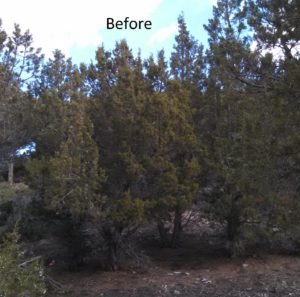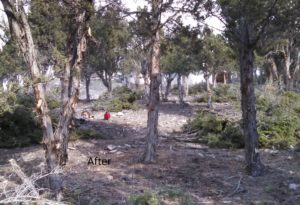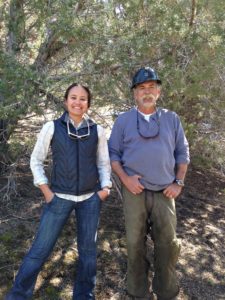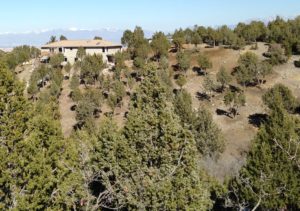It was a sobering reply.
I had asked Riley Pilgrim, a captain with the Unified Fire Authority, if he’d send engines to defend our home in the event of an
intense, fast-moving wild fire.
“Probably not,” he said.
And Pilgrim is a nice guy. But junipers line our long, steep driveway and surround the house. Fire fighters don’t like to risk getting boxed in and overcome by such dense fuels in close proximity.
Therefore, the task for the Department of Natural Resources and me, as outlined by the DNR’s Urban Interface Coordinator, Brianna Binnebose, was to reduce the fuel and make Cayuse Crest defensible without sacrificing aesthetics. Or, as Binnebose’s boss, Trent Bristol, stated: “We’re charged with assisting private landowners, helping them meet their forestry management goals.”
Sounds mighty magnanimous. But it’s actually just good fiscal sense. According to Utah’s Catastrophic Wildfire Reduction Strategy report, issued after 2012 fires claimed over 400,000 acres, each dollar of prevention equals $17 in suppression. Binnebose said based on her review of current
research, the figure is actually even higher. It depends on the values (properties) at risk and the cost of mitigation.
As development and drought exacerbate the wildfire issue, the problem is hottest in northern Utah, where the population is projected to grow by 60 percent in the next 35 years. That’s an extra 600,000 people butting up against the wilderness of the Wasatch and Oquirrh mountains. Read report here.
Home by home, community by community, buffers are being created. For instance, the Bureau of Land Management conducted a fuel reduction project about 10 years ago on hundreds of acres nearby. My property and my neighbors’ property would add to the treated area, thereby reducing the suppression costs in the event of a fire here. Read In the Line of Fire, Part I
Starting at the end of last year, the DNR’s Brianna Binnebose coordinated efforts with several colleagues in her department. Initially, six of us walked the 10-acre property perimeter. Binnebose flagged trees for removal or limbing and we discussed strategy and project scope. Half of the junipers would either be limbed or removed. (In the end, only about 60 trees were taken down, but hundreds were limbed.)
I met Robert Sanders, Davis County Fire Warden and the main engineer of fuel reduction here at Cayuse Crest. He cut with a shrewd eye, balancing aesthetics with fire savvy. Sanders worked for three decades with the US Forest Service, fighting fire in southern California and in Utah before joining Utah’s DNR in 2012.
With grant money, a private company was contracted to chip about half of the juniper. Then, as the official 2015 fire season opened (clearing funding for state and federal employees) engine and Hot Shot crews cleaned up the balance. The place is awash with juniper chips, but nowhere is it more than a few inches deep. That’ll keep down the dust and allow for revegetation.
Additional funding allowed Binnebose to provide me with 90 pounds of fire-wise grass seed (mostly wheat grasses) to help with planting anew.
In total, I estimate about $20,000 of work was completed. The property was transformed for the better. We can see the road through the junipers and see the horses in the pasture, yet plenty of cover remains for privacy, shade, etc.
Coming next. Part III, fire savvy in small packages.





Maddy, I just last week read a book that my sister in New Zealand recommended, called “Kinglake-350” by Adrian Hyland (The Text Publishing Company). It’s about a devastating brush fire just outside Melbourne, Australia in 2009. The situation was somewhat similar to yours: hilly/mountainous, filled with fuel (eucalyptus trees, in their case), drought-ridden and wickedly hot that summer. Much the way “The Perfect Storm” taught us the physics of the weather and waves that caused that disaster, this book is really instructive about the interaction of the geography, the humans and the fire, and how everything came together to cause an unprecedented conflagration. I couldn’t put it down, literally. if you can’t find it, let me know and I’ll send you mine (I had to special order it at the bookstore). – Marty Jo
Great reference. I’ll check to see if I can get it. Thank you! And great to hear from you!